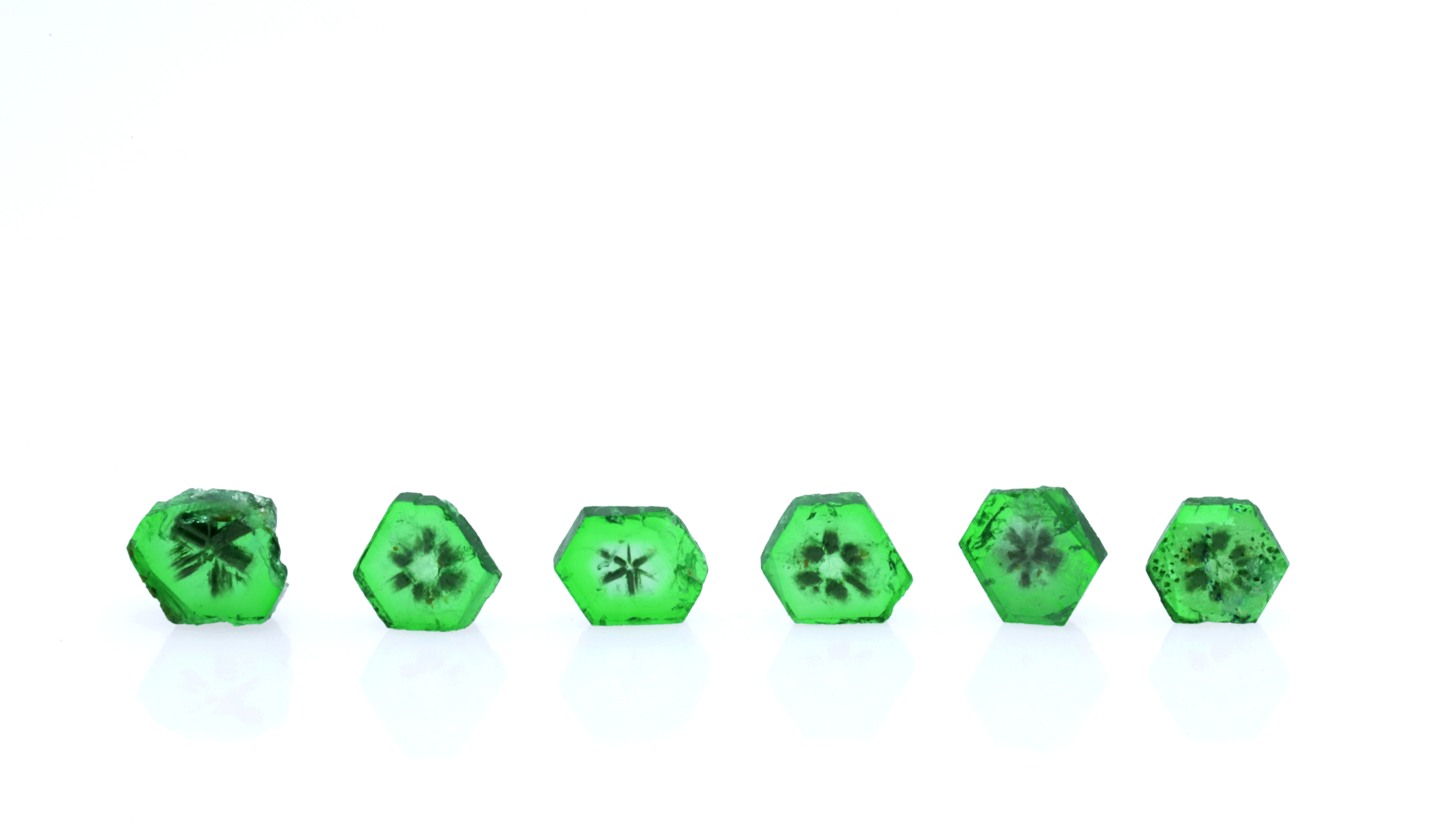Jan 30, 2023
ONLINE MESSAGE
GUILD looks forward to your suggestions.
If you have any cooperation or consultation, please feel free to contact us.
November 2019
Trapiche emeralds are usually found in Colombia. Recently the authors received six emeralds reportedly from Swat Valley, Pakistan, polished as double-sided wafers, retaining their original hexagonal crystal habit and exhibiting a trapiche-like pattern (figure 1). These samples weighed from 0.38 to 0.83 ct, with a refractive index of 1.588–1.599 and a birefringence of 0.009–0.011.

Figure 1. Six emerald wafers reportedly from Swat Valley, Pakistan, showing a trapiche-like pattern. They range from 0.83 to 0.38 ct from left to right, with a thickness of about 1.51 to 2.08 mm. Photo by Kaiyin Deng.
Generally, these trapiche emeralds were composed of four parts from rim to core: a green rim, a light green area, six arms, and a colorless core, as illustrated in figure 2A. The rims had a highly saturated green color, and most were relatively clean except for several fractures and tiny fluid inclusions. The rims ranged from approximately 1 to 2 mm wide. Although the boundary between the green rim and the light area was not very sharp, a hexagonal boundary was visible. Six black arms spread in a hexagonal symmetric pattern, with each arm perpendicular to the hexagonal side. The colorless core usually had a hexagonal shape.
Microscopic observation revealed that every arm contained many minute black platy inclusions. These small particles appeared dark under transmitted light (figure 2B), while they showed bright metallic luster under reflected light (figure 2C). Micro-Raman analyses (figure 3) identified these inclusions as magnetite. Peaks at 662 and 545 cm–1 were consistent with two main peaks of magnetite, according to the RRUFF online database, while peaks at 683 and 400 cm–1 may be as- signed to the emerald host. Chemical analysis by energy-dispersive X-ray fluorescence (EDXRF) on the sample shown in figure 19 revealed an iron content of 20,860 ppm (n = 3) in the light green area and 17,000 ppm (n = 3) in the rim. The difference in iron content may be due to the inclusions, since magnetite (Fe3O4) is mainly composed of iron and oxygen.
To our knowledge, there have not been many reports of trapiche emerald from localities other than Colombia. The trapiche pattern caused by platy magnetite inclusions could help advance our understanding of trapiche.

Figure 2. These trapiche emeralds from Pakistan were mainly composed of four parts: a green rim, a light green area, six arms, and a nearly colorless core as illustrated in figure A. These arms appear dark under transmitted light (B), and show bright metallic luster under reflected light (C); field of view 8.48 mm. Illustration and photos by Yujie Gao.

Figure 3. Raman analysis identified these inclusions as magnetite. Peaks at 662 and 545 cm–1 agree with the two main peaks of magnetite, according to the RRUFF database, while peaks at 683 and 400 cm–1 may be assigned to the emerald host.
(This article was first published in Gems & Gemology, 2019, Vol. 55, No.3, pp. 441-442)
GUILD looks forward to your suggestions.
If you have any cooperation or consultation, please feel free to contact us.